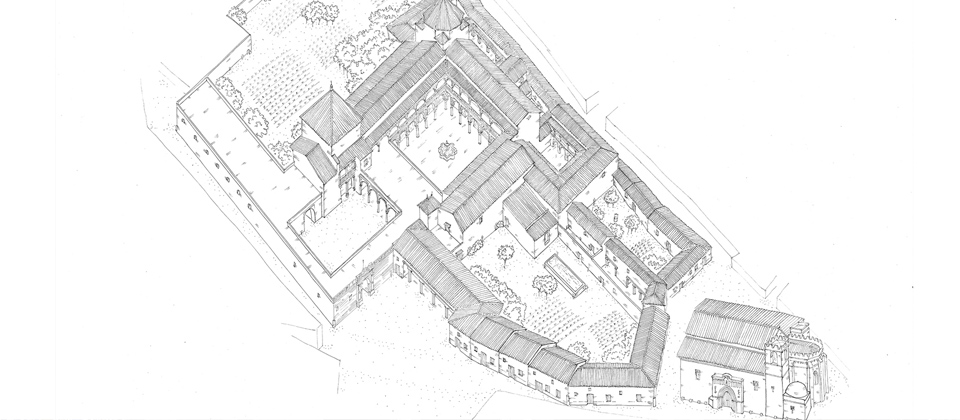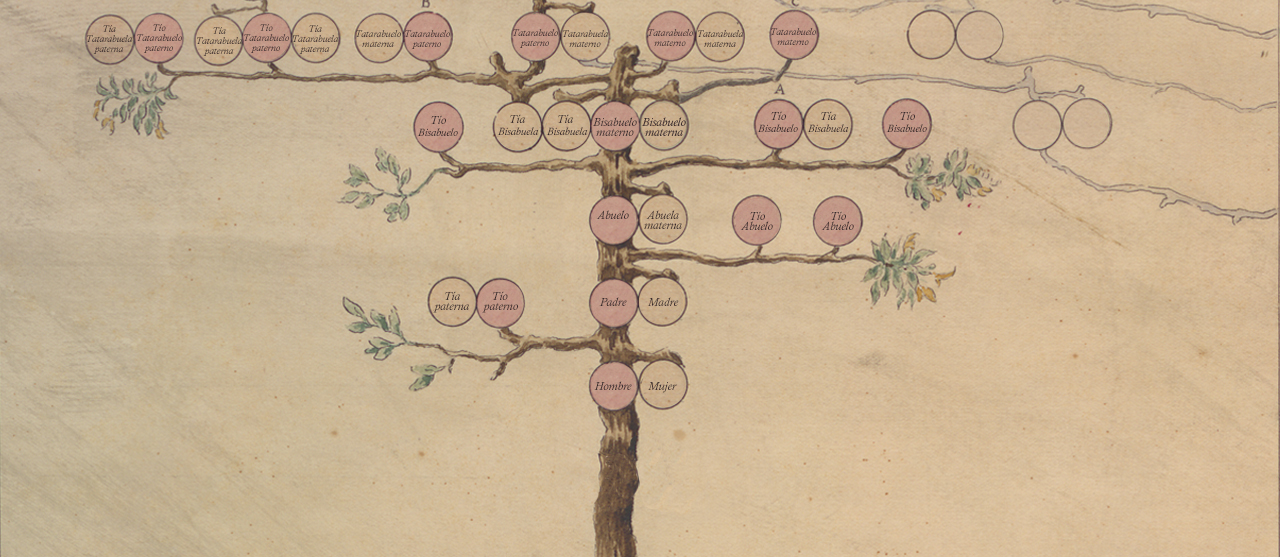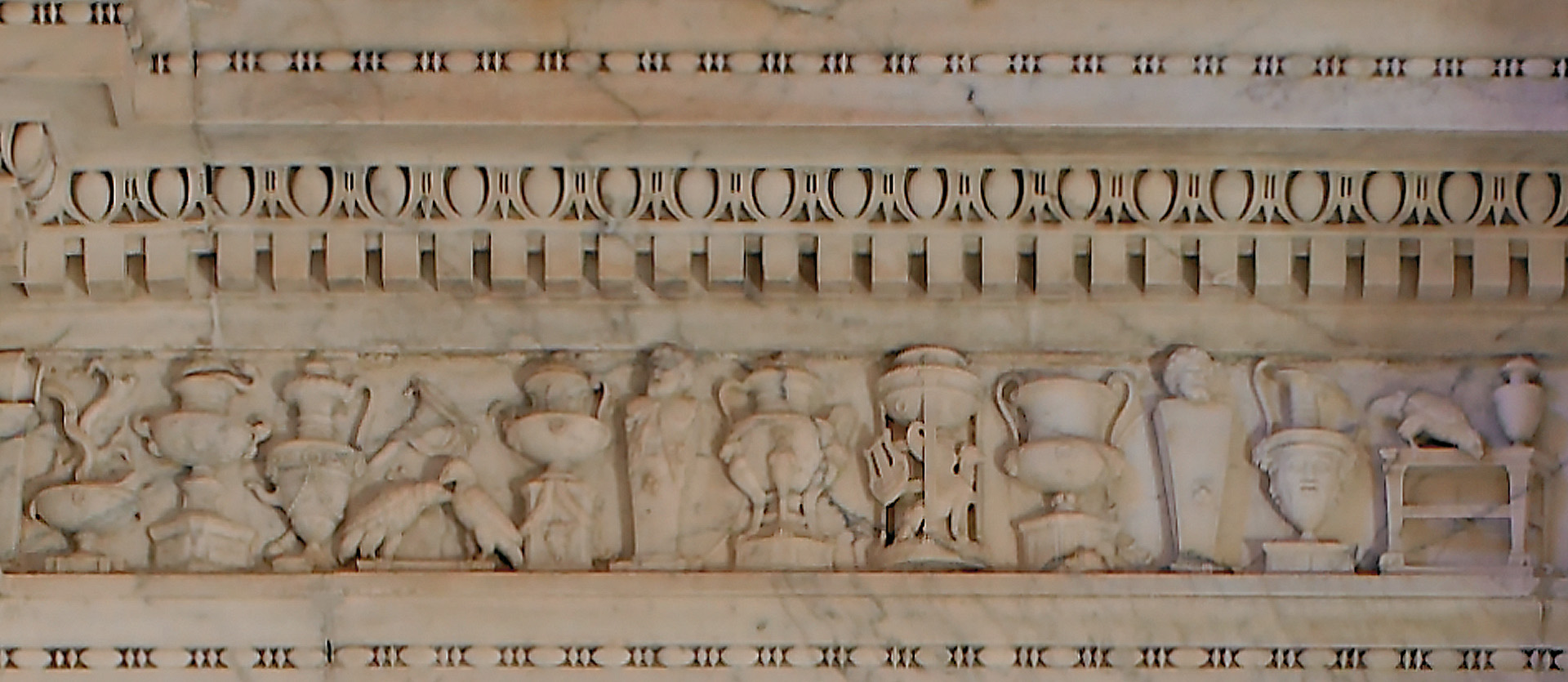I Marquis of Tarifa
Fadrique Enríquez de Ribera (1476-1539)
Don Fadrique Enríquez de Ribera, the elder of the two sons of Don Pedro Enríquez and Doña Catalina de Ribera, was born in 1476. His father, Don Pedro, had been married in first marriage to Beatriz de Ribera, his mother Catalina's older sister, a marriage that had produced a son, Francisco, who was the main heir to the patrimony of the House of Enriquez de Ribera.. Lacking, therefore, don Fadrique prospects of receiving a substantial inheritance, he was quickly found a place in the Order of Santiago, taking the habit at the age of ten.. From 1490 he accompanied his father to the war of Granada where he was knighted by the ill-fated Prince Don Juanthe only son of the Catholic Monarchs.
From his library, which contained more than two hundred volumes - a considerable number for the time - it can be deduced that he must have been receiving a "modern" education with special emphasis on the classicsalthough all we know about her is that she was pupil of the famous humanist Pedro Mártir de AngleríaOn the other hand, he was a cultured man, with a complex and unusual intellectual horizon, which included, as the inventory of his library shows, from traditional pious works and Greco-Latin classics, to other works of full humanism such as the colloquies of Erasmus of Rotterdam or modern literature such as the Celestina, and even some that reflect a certain interest in magic, astrology and alchemy. On his death, he bequeathed this library to the monastery of the Carthusian monastery of Las Cuevas, which was dispersed during the disentailment.
On 4 February 1492, on his return from the capture of Granada, his father, the Adelantado Don Pedro, died, which meant that the family patrimony of the Enriquez de Ribera family was divided up. Although the bulk of the estate passed to Don Francisco, the half-brother of Don Fadrique, his mother, Catalina de Ribera, excellent administratorHe then received a large estate which he was able to increase spectacularly so that, on his death in 1505, he was able to divide it equally between his two sons, an inheritance valued at just over twenty-five million maravedíes and that it was included two urban palacesone the Casa de Pilatos, for the eldest, don Fadrique and another, the Palacio de Dueñas, for the youngest, Don Fernando. Four years later, in 1509, Don Francisco died without succession. with which don Fadrique received a fabulous inheritance which included, in addition to numerous lordships such as Tarifa, Alcalá de los Gazules and Bornos, the almonas, i.e. the monopoly on the manufacture and sale of soap, an industry which, in the first half of the 16th century, expanded its market dizzyingly with the Sevillian monopoly on trade with America. In 1525, the Venetian ambassador, Andrea Navagero, estimated Don Fadrique's annual income at more than 11 million maravedis, i.e. his properties generated an annual income almost equivalent to the total value of what he inherited from his mother in 1505.
With the death of his stepbrother, not only his economic position changed, but also his social position, which became evident. in 1514 when it was created Marquis of Tarifa by Queen Juana.
The major event in his lifeAs he himself proclaims, among Jerusalem crosses, on the façade of his house, "4 days of August 1519 entered Iherusalem"was the pilgrimage journey he made to the Holy Land between 1518 and 1520. which we know in detail thanks to the diary he wrote himself on his return. In addition to the personal importance that this journey had for Don Fadrique, as a pilgrim seeking eternal salvation by collecting relics and accumulating indulgences, what is transcendental for the architecture of his palace and that of Seville is that it was a journey of great importance, crossing Italy on the way there and back, he was exposed to the best of Renaissance architecture. contemporary. On his return he established relations with genoese workshopsThe company acquired in successive purchases of the first marble samples of renaissance art seen in SevilleThe Marquis of Tarifa: tombs to honour the memory of his ancestors and architectural elements for the renovation of his palace. The impression made on his contemporaries by these marbles and their use to create new spaces for new forms of sociability made the 1st Marquis of Tarifa the introducer of the Renaissance in Seville and his palace into a noble residence that would serve as a model for the urban oligarchy to imitate.
On his death without legitimate descendants in 1539, he was succeeded by his nephew Don Per Afán de Ribera, who ordered that his free property be auctioned and that the proceeds be used for the building of the Hospital de las Cinco LlagasThe Renaissance work that is now the seat of the Andalusian Parliament, thus furthering, with his inheritance, the role he had played during his lifetime as an introducer of the Renaissance.
Related content




